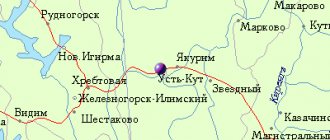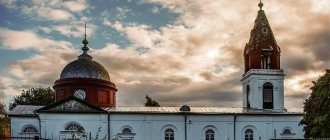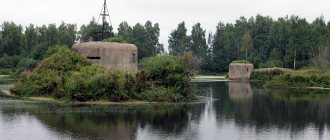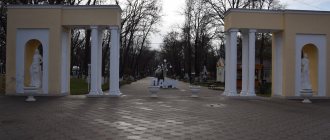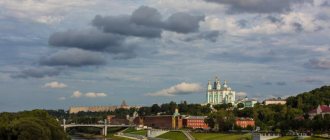Alexey Viktorovich Britsun, head of administration of the Volkhov municipal district
The Volkhov district is located in the northeast of the Leningrad region in the southern Ladoga region.
The area of the district is 512.4 thousand hectares. The population is 95.2 thousand people, including the urban population - 69.3 thousand people, the rural population - 25.7 thousand people.
Nature generously gifted the Volkhov land. The landscapes of the region are striking in their diversity: forests and swamps, river canyons and waterfalls, sand dunes and the endless expanses of Ladoga, plains with rolling hills. Large navigable rivers flow through the territory of the Volkhov region: Volkhov, Svir, Pasha, Syas.
The lands along the banks of the Volkhov River have been declared a natural monument in the Leningrad region in order to preserve geological outcrops, artificial caves, and ancient mounds.
The Volkhov residents wrote unforgettable pages in the chronicle of the Russian state: from here, in the words of the chronicler, “the Russian land came from here.” The centuries-old history of the Volkhov region is inextricably linked with the heroic history of all of Russia from ancient times to the present day, with the names of famous historical figures and commanders: Rurik, Oleg the Prophet, Alexander Nevsky, Peter I, Alexander Suvorov. Modernity and past are closely intertwined here.
In the Volkhov region there are 280 settlements consisting of 3 urban and 12 rural settlements: Municipal Municipality Volkhov City, Novoladozhskoe urban settlement, Syastroyskoe urban settlement, Berezhkovskoe rural settlement, Vyndininoostrovskoe rural settlement, Issadskoe rural settlement, Kiselninskoe rural settlement, Kolchanovskoe rural settlement, Pashskoe rural settlement , Potaninsky rural settlement, Sviritskoye rural settlement, Selivanovskoye rural settlement, Staroladoga rural settlement, Usadishchenskoye rural settlement, Khvalovskoye rural settlement.
Volkhovsky district on the map of the Leningrad region
The district is located in the central part of the Leningrad region.
In the north it borders with the Lodeynopolsky district, in the east - with the Tikhvinsky district, in the south - with the Kirishi district and in the west it adjoins the Kirovsky district. The Volkhov, Syas and Pasha rivers flow through the area; the northern shore of the area is washed by Lake Ladoga. The area of the district is 5016.4 km.
The permanent population according to the State Statistics Committee as of January 1, 2009 is 93.6 thousand people. Area - 512.4 hectares.
The administrative center is the city of Volkhov. The city is located on the Volkhov River, 122 km from St. Petersburg. The city has the Volkhovstroy-1 and Volkhovstroy-2 railway stations.
Nature
Several navigable rivers flow through the region: Volkhov, Svir, Pasha, Syas . A significant part of the region's territory stretches along the southeastern shore of the picturesque Lake Ladoga , the largest in Europe.
Forests cover 420.8 thousand hectares, which is 83% of the area of the Volkhov region. Volkhovsky, Pashsky and Volkhovsky rural forestry enterprises take care of forestry. The area of hunting grounds is 480 thousand hectares, of which 40 thousand hectares are the area of the Zagubye and Potanino-Sonino hunting reserves.
Agriculture and industry
The industry of the Volkhov region is represented by pulp and paper, metallurgical, chemical and woodworking enterprises. Agriculture includes meat and dairy farming, potato farming, vegetable growing and grain production.
The largest industrial enterprises are the Volkhov aluminum smelter, the Talosto ice cream plant, JSC LenoblDomStroy - a modern plant for the production and construction of large-panel wooden houses using German technology, JSC Parnas-M - a manufacturer of sausages and meat delicacies.
On the territory of the district there is the Volkhov hydroelectric power station named after. V.I. Lenin and Volkhovstroy Locomotive Depot. The area has developed railway and road transport. More details in the ECONOMIC LIFE section.
Geography
Panorama of the village of Storozhno on the shores of Lake Ladoga.
The entire territory of the district belongs to the drainage basin of Lake Ladoga. The main river in the western part of the region is the Volkhov, and the center of the region belongs to the river basin. Syas. Both the Volkhov and the Syas are the main tributaries of Lake Ladoga. Volkhov is blocked by the Volkhov hydroelectric power station, which became the first large hydroelectric power station built in the Soviet Union. The northern part of the region belongs to the river basin. Pasha, left tributary of the Svir. The lower reaches of the Svir form the border between the Lodeynopolsky and Volkhov regions.
Transport
Active development of the region began in 1904, when the St. Petersburg-Vologda railway ran here and a railway bridge was built. The small station of Zvanka has acquired the significance of an important transport hub with four directions. Today the city of Volkhov is the largest railway junction in the North-Western region of Russia; branches of the railway pass here and highways intersect leading to almost all directions of the country: Moscow, Vologda, Murmansk, St. Petersburg, as well as to the Urals and the South. Volkhov is an important industrial, transport, trade, tourism, cultural and administrative center of the Volkhov municipal district.
Recreation and fishing
Despite the abundance of attractions, it cannot be said that the Volkhov district of the Leningrad region is one of the most interesting in the region from a tourism point of view. Although, quite a lot of people from St. Petersburg come here on weekends, and those passing through the area in transit stop at the most easily accessible attractions. But in general, there are quite a lot of interesting places in the area; people come here, among other things, to relax on the banks of rivers or Lake Ladoga.
From the point of view of fishing, the Volkhov region cannot be called very interesting either. There are practically no lakes here, except for small ones; only the rivers and the shore of Lake Ladoga are of interest. Of course, the largest rivers – Syas and Volkhov – attract the largest number of fishing enthusiasts.
The tourist infrastructure is rather poorly developed, but there are a sufficient number of recreation centers, hotels and guest houses, most of which are concentrated on the shores of Lake Ladoga and the largest rivers.
Story
The history of the area is closely connected with the city of Volkhov. In 1904, during the construction of the St. Petersburg-Vologda railway, the Zvanka station appeared here, named after the settlement of the same name located nearby. In 1916, a railway to Murmansk was built from this station.
The city arose as a settlement for the builders of the Volkhov hydroelectric power station, which was built from 1918 to 1926 and was the first large hydroelectric power station in Russia. In 1929, not far from the hydroelectric power station, the first aluminum smelter in Russia was founded.
From December 27, 1933 to 1940, the city was called Volkhovstroy. Until 1933 it had the status of a workers' village.
Awarded the Order of the October Revolution in 1970.
On December 28, 2004, due to the lack of residents, the villages at the Terebochevo and Ievkovo stations, as well as the villages of Lukina Izba and Khimuchastok in the Volkhov region, were abolished.
On July 10, 2007, the Legislative Assembly of the Leningrad Region considered the issue of abolishing the settlement of Kamenka, Volkhov District due to the lack of living population, but the bill was rejected.
A historical fact is also the discovery of a large treasure of Western European denarii from the 11th century in 1934 in the now defunct village of Vikhmyaz on the Pasha River. Currently, the found coins are kept in the State Hermitage.
Population and administrative structure
The population of the Volkhov region is 90,175 people. The historical maximum was recorded in 2010 - 95,182 people, thus, the population of the region is decreasing. It is worth noting that in recent years there has been a decrease in both mortality and birth rates. The decline in the population of the Volkhov region is also facilitated by its proximity to St. Petersburg, where people are moving to live.
The Volkhov municipal district consists of twelve rural and three urban settlements, which include 280 settlements. In 2004, five settlements were abolished due to the lack of residents.
Table and list of rural and urban settlements in the Volkhov region.
| Name | Center | Population | Settlements included |
| Municipal entity Volkhov city | Volkhov city | 44857 | 1 |
| Syastroy urban settlement | Syasstroy city | 13440 | 11 |
| Novoladozhskoe urban settlement | City of Novaya Ladoga | 8270 | 5 |
| Pash rural settlement (and beyond) | Village Pasha | 4760 | 55 |
| Kolchanovskoe | Village Kolchanovo | 2820 | 25 |
| Staroladoga | Village Staraya Ladoga | 2465 | 17 |
| Kiselninskoye | Village Kiselnya | 2360 | 21 |
| Issadskoe | Issad village | 1930 | 15 |
| Usadishchenskoe | Village Usadishte | 1770 | 26 |
| Vyndinostrovskoe | Village Vyndin Island | 1670 | 18 |
| Berezhskovskoe | Berezhki village | 1580 | 20 |
| Khvalovskoe | Village Khvalovo | 1305 | 35 |
| Potaninsky | Potanino village | 1170 | 17 |
| Selivanovskoe | Selivanovo village | 1070 | 11 |
| Sviritskoye | Sviritsa village | 700 | 3 |
Attractions
There are several significant cultural and architectural monuments located in the Volkhos region. Volkhovskaya HPP named after. V.I. Lenin is a masterpiece of constructivism, engineer Genrikh Osipovich Graftio. The Railway Station is also an architectural monument.
Among the cultural monuments stand out. Monument to the “Heroic Defenders of Volkhov”, monument to S.M. Kirov, monument to academician G.O. Graftio.
6 km north of Volkhov is Staraya Ladoga, the first capital of Ancient Rus'.
Cultural centers are the Zheleznodorozhnikov Palace of Culture, the VAZA Palace of Culture, the House of Young Creativity, and Park of Glory. More details in the section FOR THE ACTIVE AND YOUNG.
Culture and recreation
Church of St. Demetrius of Thessaloniki, Staraya Ladoga
The region has 84 cultural heritage monuments of federal significance and an additional 164 objects classified as cultural and historical heritage of local significance.[17] Monuments of federal significance include, in particular, the Volkhov hydroelectric power station, the Zelenetsky Trinity Monastery complex in the former village of Zelenets, and the Staraya Ladoga ensemble.
Staraya Ladoga is one of the oldest settlements in Russia and contains two of the several dozen surviving pre-Mongol buildings in Russia. The St. George Church is located in the Old Ladoga Fortress, while the much larger Assumption Cathedral is the Catholicon of the Assumption Monastery. Both churches were built in the 12th century. Another monastery in Staraya Ladoga is St. Nicholas Monastery. Many ancient buildings in Staraya Ladoga, including St. George's Cathedral, the fortress and the wooden Church of St. Demetrius, belong to the Old Ladoga Museum-Reserve.[18]
Zelenetsky Trinity Monastery was founded in the 16th century, and most of its buildings form an architectural ensemble from the late 17th century.
Two more museums in the area are the Museum of the History of the City of Volkhov.[19] and Novoladoga City Museum.[20]
Tourism
Volkhovsky district is one of the attractive subregions of the Leningrad region. Tourists have the opportunity to visit two historical eras at once, separated by a thousand years: in the ancient Russian city of Staraya Ladoga, which has preserved monuments from the times of Oleg the Prophet and Alexander Nevsky, and in the young city built at the dawn of socialism - Volkhov.
It was in these places that Russian statehood was born. A huge number of archaeological, architectural, historical monuments appear before the eyes of an inquisitive, searching person.
In the city of Novaya Ladoga, tourists will see canals from the era of Peter I, memorable places associated with the stay of the Russian commander Suvorov (barracks of the Suzdal regiment), St. Nicholas Cathedral, renamed the Cathedral of the Nativity of the Blessed Virgin Mary, the memorial of the Red Banner Ladoga Flotilla will tell about the heroes of the Great Patriotic War.
Five hotels, a dispensary, 19 cafes and restaurants are ready to welcome guests of the area and offer them a variety of services. For more details, see the NOTES TO TOURISTS section.
Economy
Industry
Large industrial enterprises in the region include: the Volkhov hydroelectric power station and an aluminum plant in Volkhov, and a pulp and paper mill in Syasstroy. There are also forestry and food industry enterprises.[15]
Agriculture
The region's agriculture specializes in livestock raising, meat and milk production, and fish farming.[16]
Transport
Castle Old Ladoga Canal (abandoned) in the city of Novaya Ladoga.
Volkhov (Volkhovstroy I and Volkhovstroy II stations) is an important railway junction. One railway line connects to St. Petersburg (Moskovsky Station), and Volkhovstroy I is the final station for commuter trains from St. Petersburg. The railway line continues in the east. Vologda via Tikhvin and Cherepovets. Another railway line passing through Volkhov connects Chudovo in the south and Lodeynoye Pole, Petrozavodsk, and ultimately Murmansk in the north. At Chudovo it connects with the railway between St. Petersburg and Moscow, so that all communications between Moscow and Murmansk pass through Volkhovstroy.
The M18 Highway, connecting St. Petersburg and Murmansk, crosses the northern part of the region. In Kiselnyaya the road branches to the southeast and goes through Volkhov, Tikhvin and Cherepovets to Vologda. Volkhov is also connected by road with Kirishi. There are also local roads; bus traffic comes from Volkhov.
The Volkhov River is navigable within the area, but there is no passenger navigation. At the beginning of the 19th century, a system of canals was built to bypass Lake Ladoga, which at that time were part of the Mariinsky Aqueduct, connecting the Neva River and the Volga River. In particular, the Svir Canal connects Svir and Syas, and the Syas Canal connects Syas and Volkhov. The New Ladoga Canal connects the Volkhov and Neva. It replaced the Old Ladoga Canal, built by Peter the Great, which thus fell into disuse and fell into disrepair. The four canals are collectively known as the Ladoga Canal.
Recommendations
Notes
- ^ a b c d f
Area Law No. 32-ounce - ^ a b
Official website of the Volkhov region. Volkhov municipal district in figures and facts (in Russian) - ^ a b
Federal State Statistics Service of Russia (2011).
“All-Russian Population Census 2010. Volume 1" [All-Russian Population Census 2010, vol. 1]. All-Russian Population Census 2010 [All-Russian Population Census 2010]
(in Russian). Federal State Statistics Service. - "26. The size of the permanent population of the Russian Federation by municipalities as of January 1, 2022.” Federal State Statistics Service. Retrieved January 23, 2022.
- ^ a b c
Law No. 56-ounce - "On the calculation of time." Official Internet portal of legal information
(in Russian). June 3, 2011. Retrieved January 19, 2022. - Federal State Statistics Service of Russia (May 21, 2004). “The population of Russia, the constituent entities of the Russian Federation as part of federal districts, urban settlements, urban settlements, settlements, settlements of 3 thousand or more people.” [Population of Russia, its federal districts, federal subjects, districts, urban settlements, rural settlements - administrative centers, rural settlements with a population of more than 3000 people] (XLS). All-Russian Population Census of 2002 [All-Russian Population Census of 2002]
(in Russian). - “All-Union Population Census of 1989. The actual population of the union and autonomous republics, autonomous regions and districts, territories, regions, urban settlements and villages of Volkhov” (in Russian). SPR. Retrieved December 12, 2012.
- Catalog of enterprises (in Russian). SE LO "Lenoblconsult". Retrieved December 12, 2012.
- Monuments of history and culture of the peoples of the Russian Federation (in Russian). Ministry of Culture of Russia. Retrieved June 2, 2016.
- Staraya Ladoga Historical, Architectural and Archaeological Museum-Reserve (in Russian). Russian Network of Cultural Heritage. Retrieved December 26, 2012.
- Museum of the History of the City of Volkhov (in Russian). Russian Network of Cultural Heritage. Retrieved December 26, 2012.
- Novoladozhsky Museum of History and Local Lore (in Russian). Russian Network of Cultural Heritage. Retrieved December 26, 2012.



